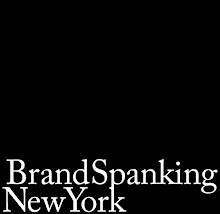“Strategy without tactics is the slowest route to victory. Tactics without strategy is the noise before defeat.”
— Sun Tzu, The Art of War, 6th Century B.C.
It’s time to set the record straight about “strategy,” the most misused word in the history of business, and quite possibly, the English language.
Because its meaning has been confused, tangled, and re-tangled for decades — an affliction that's only worsened with the explosion of the web — let's keep this simple.
There are three primary components to brand planning (and marketing in general). No more, no less — and they occur in this order only:
1. Objective — A concrete goal to be achieved by a stated time.
Ex.: By Q3 2011, Sun Tzu Arts, Inc. will top Fast Company’s “Most Innovative Companies” list in its category.
2. Strategy — Rules put in place for the expressed purpose of fulfilling the objective.
Ex.: Every external and internal brand touchpoint, whether existing or forthcoming, must reinforce Sun Tzu Arts’ “innovation heritage” positioning and provide two-way communication with its audience.
3. Tactics — Where and when resources are allocated to realize the objective.
Ex.: Dozens of initiatives across the entire Sun Tzu Arts media mix and internal operations, including:
- Commit Human Resources to increasing employee retention to 95%
- Engage a social media monitoring service to provide brand managers with weekly reports and quarterly trends
- Redesign e-commerce site to include media tags and share functions for all products
- Hire a VP, User Experience
- Institute a loyalty rewards program
- Redeploy corporate blog to showcase brand managers’ thought leadership on “innovation heritage” within and outside the company
- Executives speak at two conferences per quarter, minimum
- Free smartphone app with first-in-segment features — including direct access to store personnel, limited-edition products, mobile QR code discounts, and pre-press-release news — made available only to app users
Of course, the above are purely hypothetical and constitute about as basic a three-tier process as I can imagine. I kept it simple because there’s no reason it shouldn’t be.
And unless something seismic occurs within the competitive landscape, the consumer market or the organization itself (usually bad, like BP’s oil spill fiasco, Toyota’s widespread safety recalls, and Facebook’s privacy predicament), brand objectives do not change until they’re fulfilled. I mention this because, when strategy comes before the objective — or, heaven forbid, tactics come before strategy — the knee-jerk reaction when a tactic fails is to kill the objective or strategy. And that’s precisely the kind of myopia that plagues brands which, not surprisingly, run around in circles, confuse consumers, waste money, lose talent, and never win.
To that end, I constructed a mnemonic. Now let’s say it together:
“Strategy is the rules, Tactics are the tools. Strategy is the rules, Tactics are the tools. Strategy is the rules, Tactics are the tools.”


No comments:
Post a Comment